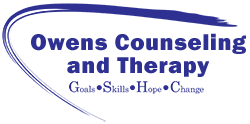By: Ema Gavrilovic
As November celebrated Veteran’s Day on the 11th, let’s take a moment to consider the immense sacrifices this special part of the U.S. population has given us over the years, and even centuries, since this country’s existence. Members of the military have found themselves in scary predicaments in battle, and when they return home, they may carry some of the burden back with them in the form of PTSD, or post-traumatic stress disorder. Many returning members suffer for years without seeking the help they need to feel better. Sometimes, they even have thoughts of committing suicide, or even go through with the act. PTSD is characterized by intrusive thoughts about a near-death experience, or trauma, and this trauma paves the way to a sense of being unwell. Back on U.S. soil., it takes a long time to transition to civilian mode. Sometimes, PTSD makes this process even harder.
Indeed, risk for suicide is 22 percent higher among veterans compared with U.S. civilian adults. As of 2014, an average of 20 veterans die of suicide per day. Out of those 20 fatalities, only six of them sought care through a VA (Veteran’s Affairs) service either that year or the year prior. This means that a total of 30 percent of veterans who make up the latter statistic did not seek out services through the VA. Thankfully, across the country, 21.6 million veterans are receiving some form of care from a VA provider. In order to reduce the stigma to veterans associated with mental health care, it takes a combination of support through society itself and peers close to the veteran. The good news is that more and more returning veterans have support from their own peers and families to seek help now more than ever before. My previous September post in the newsletter featured a yearly event that attracted not only veterans, but also supporters, friends, and family members of military members. The Chicagoland event called the Chicago Veterans Ruck March is conducted yearly for the population to increase awareness of suicide among veterans and to allow them to find the help and support that they need, and, to show them that they are not alone in their feelings.
Tried and true treatment is available for members who suffer from PTSD. The VA launched a user-friendly informational website, called AboutFace, for the public to learn more on PTSD and how it affects veterans. The website features videos of veterans, family members, and clinicians sharing their stories about PTSD. This website is worth checking out if anyone is currently feeling unwell for a long time from a past, scary event that involved them. Another awesome website to learn more about PTSD and therapy for it is to check out PTSD Treatment Decision Aid created by the VA. It allows veterans who are deciding on a clinician for the first time to check out different treatment options and to have a better understanding about current therapy practices. This way, they have more control as to which treatments they may prefer and thus, seek out clinicians who use their preferred treatment choice.
